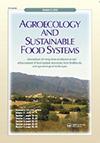Recent Developments of No-Till and Organic Farming in India: Is a Combination of These Approaches Viable?
引用次数: 4
Abstract
The increase in crop production brought by the green revolution in India is now shadowed by new challenges related to soil degradation (e.g., erosion, decline of soil organic matter content, salinization) and scarcity of water resources. The present work particularly discusses the contribution of no-till and organic farming, which are increasingly being adopted in India, to meet the increasing food demand in a sustainable way. Under no-till, erosion is reduced to rates close to those found in natural ecosystems, provided enough mulch is retained at the surface which is usually not the case in India, because of competing uses, for example, fodder, fuel, construction material, and also crop residue burning for land preparation. No-till should therefore not be considered separately from complementary measures, aiming at retaining mulch on the soil surface. Efficient recycling of organic material needs to be implemented concomitantly with diversifying fodder and fuel sources which requires enhancing the multifunctionality of farming systems. These prerequisites make it difficult for farmers to adopt no-till, particularly the poorer ones for whom experimentation with new techniques often involve unbearable financial risks. Organic farming apprehends the farm as an organism, and is thus a good option to improve sustainability as introduced above, by e.g., closing nutrient cycling. However, organic farming typically implies tillage for weed control (no chemical herbicides). “Natural farming,” as promoted by Fukuoka (1978) combines no-till with organic farming. An overview of available literature on Indian experiences with “natural farming,” most of it originating from unconventional sources (i.e., reports available on Internet, but no peer reviewed literature) indicates that crop yields can compare well with the highest yields in a particular region. Increased productivity and environmental benefits are also often mentioned. The limited accuracy of these sources makes it necessary to pursue further investigations, and we conclude with propositions for future work in this context. This should start with a rigorous assessment of existing “natural farming” systems regarding their productivity and environmental benefits, in order to demonstrate its potential before starting projects that promote the system for broader adoption.印度免耕和有机农业的最新发展:这些方法的结合是否可行?
印度绿色革命带来的作物产量增加现在被与土壤退化(如侵蚀、土壤有机质含量下降、盐碱化)和水资源短缺有关的新挑战所掩盖。目前的工作特别讨论了免耕和有机农业的贡献,这在印度越来越多地被采用,以可持续的方式满足日益增长的粮食需求。在免耕的情况下,如果有足够的地膜保留在地表,土壤侵蚀的速度就会降低到接近自然生态系统的水平,而在印度,情况通常不是这样,因为有竞争的用途,例如饲料、燃料、建筑材料,以及焚烧作物残渣来准备土地。因此,不应将免耕与旨在保留土壤表面覆盖物的补充措施分开考虑。有机材料的有效回收需要在饲料和燃料来源多样化的同时实施,这需要加强农业系统的多功能性。这些先决条件使得农民很难采用免耕,特别是那些较贫穷的农民,对他们来说,试验新技术往往涉及无法承受的财务风险。有机农业将农场理解为一个有机体,因此是一个很好的选择,可以通过关闭营养循环来提高上面介绍的可持续性。然而,有机农业通常意味着为了控制杂草而耕作(不使用化学除草剂)。福冈(Fukuoka, 1978)倡导的“自然农业”将免耕与有机农业结合起来。对印度“自然农业”经验的现有文献的概述表明,作物产量可以与特定地区的最高产量相媲美,其中大多数来自非常规来源(即,在互联网上可获得的报告,但没有同行评议的文献)。提高生产力和环境效益也经常被提及。这些来源的有限准确性使得有必要进行进一步的调查,我们最后提出了在这方面未来工作的建议。首先应严格评估现有的“自然农业”系统的生产力和环境效益,以便在开始促进该系统得到更广泛采用的项目之前证明其潜力。
本文章由计算机程序翻译,如有差异,请以英文原文为准。
求助全文
约1分钟内获得全文
求助全文

 求助内容:
求助内容: 应助结果提醒方式:
应助结果提醒方式:


